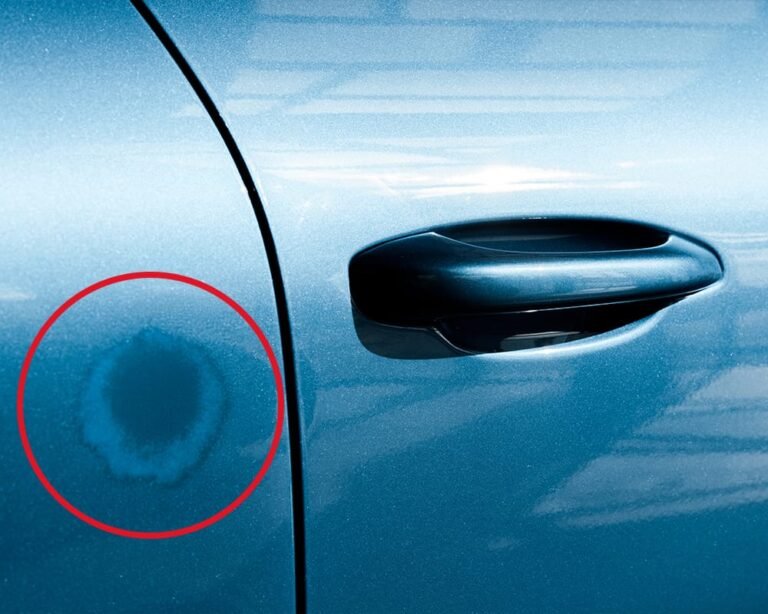Hard water stains on your car’s paint and windows can be a persistent problem, affecting the overall appearance of your vehicle. These stains, caused by mineral deposits left behind when water evaporates, can create unsightly spots that diminish your car’s shine. If left untreated for too long, they can even etch into the surface, making them much harder to remove. Fortunately, with the right techniques and products, you can restore your car’s pristine look and prevent future water spots from forming.
Understanding Hard Water Stains on Cars
Hard water contains high levels of minerals such as calcium, magnesium, and silica. When water droplets sit on your car’s surface and evaporate, these minerals are left behind, creating visible white or cloudy spots. Over time, repeated exposure to hard water—whether from rain, sprinklers, or improper car washes—can lead to stubborn stains that become embedded in the paint and glass. If the stains are not removed promptly, they can react with the clear coat or glass surface, causing etching and permanent damage.
The severity of hard water stains depends on how long they’ve been left untreated and the mineral concentration in the water. Fresh water spots are relatively easy to remove, but once they start bonding with the surface, you may need more aggressive methods such as polishing or clay bar treatment to fully restore the finish.
Step 1: Washing Your Car Properly
Before addressing hard water stains directly, it’s important to start with a thorough wash to remove any loose dirt, dust, or contaminants that could scratch the paint during the cleaning process. Use a high-quality, pH-balanced car shampoo and a microfiber wash mitt to gently clean the surface. Avoid washing your car in direct sunlight, as heat can cause water to dry too quickly, leading to more spots. After washing, rinse thoroughly with clean water and dry the car immediately using a microfiber drying towel to prevent new water stains from forming.
Step 2: Using Vinegar to Dissolve Mineral Deposits
For mild to moderate hard water stains, a simple vinegar solution can work wonders. White vinegar is acidic, making it effective in breaking down mineral deposits left behind by hard water. Mix equal parts of white vinegar and distilled water in a spray bottle. Distilled water is preferable because it doesn’t contain additional minerals that could worsen the problem. Spray the solution directly onto the affected areas and let it sit for a few minutes to dissolve the mineral buildup.
After allowing the vinegar solution to penetrate the stains, wipe it off gently using a clean microfiber cloth. Rinse the area with water and dry it immediately to prevent any leftover vinegar from affecting the paint. If the stains are still visible, you can repeat the process or move on to a stronger cleaning method.
Step 3: Clay Bar Treatment for Stubborn Stains
If vinegar alone doesn’t remove the water spots, a detailing clay bar can be a great next step. Clay bars are designed to lift contaminants, including hard water deposits, from the surface of your car’s paint and glass. To use a clay bar, first spray a clay lubricant or quick detailer onto the affected area. Gently glide the clay bar over the surface using light pressure. You’ll feel the surface becoming smoother as the clay lifts away the embedded minerals.
After treating the affected areas with a clay bar, wipe down the surface with a clean microfiber towel and rinse with water. This method not only removes hard water stains but also helps restore the smoothness of the paint and glass.
Step 4: Polishing for Etched Water Spots
If hard water stains have been on your car for an extended period, they may have caused etching—tiny indentations or dull spots in the paint or glass. In this case, polishing is necessary to restore the finish. A mild car polish or swirl remover can help smooth out the affected areas.
Apply a small amount of polish onto a microfiber applicator pad or a dual-action polisher. Work in circular motions, gently buffing the surface until the stains are no longer visible. Polishing removes a fine layer of clear coat, so it’s important not to overdo it. After polishing, wipe off any residue with a clean microfiber towel.
For etched spots on windows, a glass polish or a fine-grade steel wool pad can be used to buff out the marks. Be sure to use a dedicated automotive glass cleaner afterward to remove any remaining residue.
Step 5: Protecting Your Car from Future Hard Water Stains
Once you’ve successfully removed hard water stains, taking preventive measures can help maintain your car’s shine and reduce the chances of new spots forming. Applying a high-quality wax or paint sealant adds a protective layer that repels water and makes it easier to clean your car. Ceramic coatings offer even better protection by creating a hydrophobic barrier that prevents water from bonding to the surface.
For your car’s windows, consider applying a hydrophobic glass treatment. These coatings repel water, causing it to bead up and roll off rather than drying on the glass. This not only reduces water stains but also improves visibility during rainy conditions.
When washing your car, use filtered or softened water whenever possible. If you must use hard water, dry your car immediately with a microfiber drying towel or a blower to prevent water spots. If your car is parked outdoors, try to avoid areas where sprinklers might spray it.
Common Mistakes to Avoid
While removing hard water stains, there are a few common mistakes to avoid that could potentially damage your car’s paint and windows. One of the biggest mistakes is using abrasive household cleaners such as baking soda or harsh scouring pads. These can cause micro-scratches that dull the paint and make it more prone to damage.
Another mistake is using ammonia-based glass cleaners on tinted windows. Ammonia can break down the adhesive in window tint, causing it to bubble or discolor over time. Always opt for a tint-safe automotive glass cleaner when cleaning your car’s windows.
Scrubbing too aggressively or using a dry cloth to wipe off water spots can also lead to scratches. Always use a gentle touch and lubricated cleaning methods, such as a clay bar or polish, to safely remove stains without harming the surface.
Say Goodbye to Hard Water Stains: Keep Your Car Spotless and Shining
Hard water stains may be an annoying problem, but with the right approach, they don’t have to be permanent. By using simple solutions like vinegar, detailing clay, and polishing, you can effectively remove mineral deposits and restore your car’s glossy finish. Preventive measures such as waxing, ceramic coatings, and proper drying techniques will help keep your vehicle spotless and free from future water spots.
Maintaining a clean car not only enhances its appearance but also protects the paint and glass from long-term damage. Whether you’re a car enthusiast or just want to keep your vehicle looking its best, taking the time to remove and prevent hard water stains is an essential part of car care. With a little effort and the right tools, you can ensure your car stays in showroom condition, free from the unsightly effects of hard water buildup.







